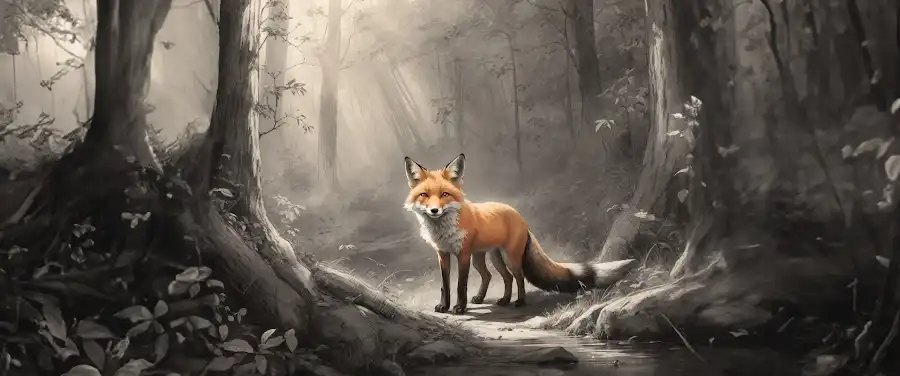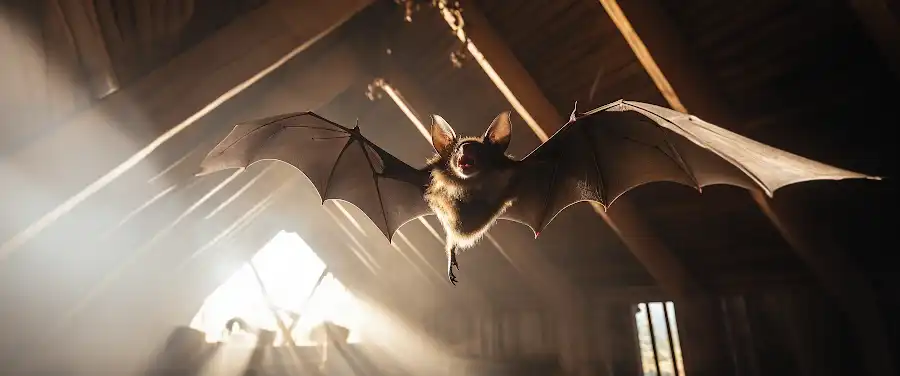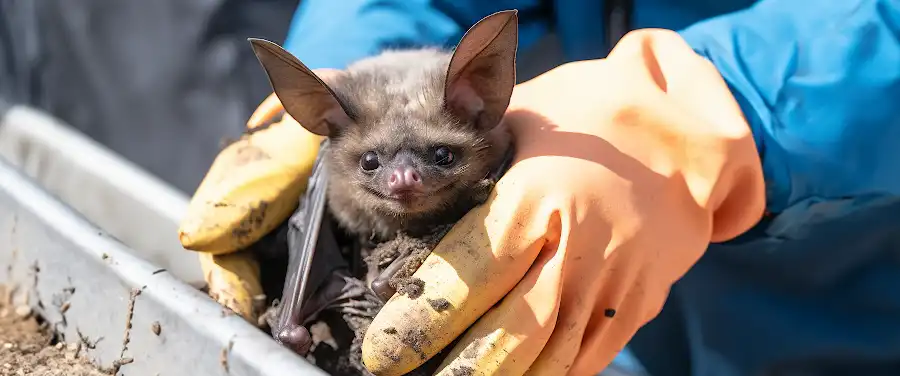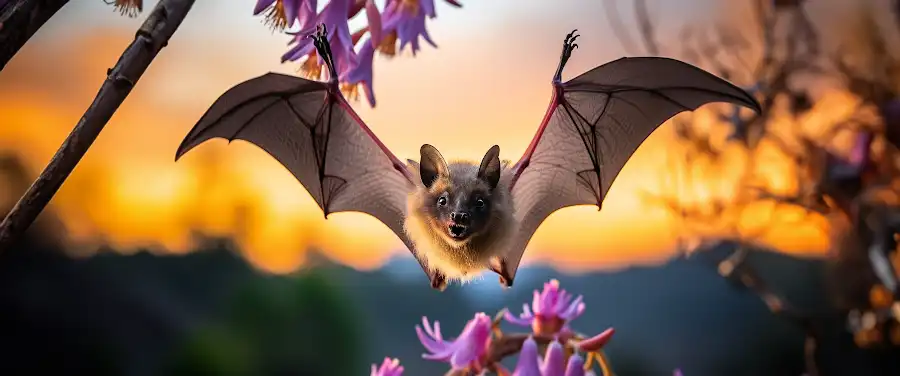
Imagine a creature that soars through the Florida night skies, its keen senses navigating the dark, all while playing its part in maintaining a balanced ecosystem. No, it’s not some mythical beast, but Florida bats, a vital part of our natural world, often overlooked and underestimated. Living in our backyards, their nocturnal lifestyle keeps most of their activities out of our sight. However, to truly appreciate their essence, it’s important to dive into the captivating bat life cycle, a biocycle packed with intrigue that never fails to amaze.
Sure, the sight of bats may not be as charming as a flock of colorful birds in the daylight, but these natural night shift workers exhibit their own unique beauty and pivotal ecological roles. Working diligently under the cover of darkness, they take over the duty of managing insect populations. Simply put, the more bats out there, the fewer insect pests to worry about. Yet, there’s much more to these diligent night-workers than simply swatting bugs out of the air.
What if I told you that the life cycle of a bat unfolds like an enchanting tale laced with mystery and wonder? From birth to flight to hibernation, each stage offers a captivating glimpse into how they’ve adapted to their nocturnal traits. It’s toil and struggle for survival, aptly covered with a pinch of magic and a couple of twirls. Last but not least, a deteriorating environment and dwindling numbers add a dash of poignant reality to the mix. This is the life of Florida bats, critters that face adversity, yet continue battling for existence—like unassuming heroes of the night.
With that said, shall we take a closer look? Get ready to embark on an unforgettable journey that allows us to explore an extraordinary life cycle, casting a spotlight on the life stages of bats that call Central Florida their home. Are you excited to meet the different types of these wonderful creatures that flit about our night skies? Well, let’s get started, and gain some in-depth knowledge about these fascinating nocturnal flyers.
How Does the Life Cycle of Bats Begin?
The fascinating life cycle of bats within Central Florida begins with their unique mating processes. Unlike many other species, bats mate during the fall and winter periods. This is primarily due to the availability of food resources and warmer temperatures favorable for reproduction at these times. While it might seem simple, the bat-mating season is more than just a biological process – it’s a spectacle in itself!
Bat gestation period varies across species but typically ranges from 40 days to six months. During this time, females store the sperm received during mating until conditions are right for fertilization. Once fertilized, the embryo starts developing inside the mother’s body.
The process of a bat giving birth is another testament to the marvel of nature. Female bats give birth to their young, called pups, while hanging upside down in a roosting site. These roosting sites provide safety and shelter for both mother and baby bats during this critical period.
How Do Baby Bats Develop?
So, how does the development of baby bats unfurl in the wild? The young bats go through a rapid development phase before they achieve complete independence.
Mother bats play a critical role in nurturing their young. Not only do they provide the pups with the essential nutrients through their milk, but they also maintain the baby’s body temperature and protect them from predators. The survival rate of baby bats is quite high, thanks to this maternal care, although they still face significant threats from natural predators and harsh weather conditions.
The development of young bats is divided into various stages. At first, the pups are primarily dependent on their mothers for food and warmth. But as weeks go by, they begin to develop important survival skills.
When they’re about a month old, the pups start learning to fly and hunt. By two months old, they’re just about ready to take on the world on their own!
Despite these seemingly odds, the survival rate of bat pups is compelling. Roughly 50% of them manage to live past their first year, according to Bat World Sanctuary.
Now that we understand how the life cycle of bats begins and develops in Central Florida, let’s explore the next intriguing facet – How long do these bats live? Rescue organizations and researchers have put considerable efforts into studying bats’ longevity, providing us with surprisingly detailed insights into their lifespan.
What is the Lifespan of Bats in Central Florida?
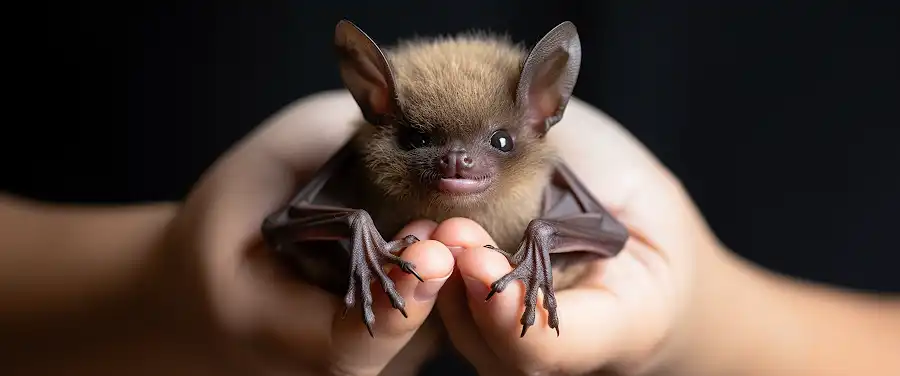
Bats in Central Florida have an average lifespan of 6 to 10 years, but this can vary significantly depending on several factors. An exceptional longevity record for Florida bats is a southern yellow bat living for over 17 years, highlighting their resilience and adaptability. However, this average lifespan may differ depending on the factors we’re about to delve into: species variance, diet preferences, and surrounding predators.
Species Variance
There are approximately 13 bat species that call Central Florida their home. The longevity of these species varies, with some species like the evening bat living for 2-4 years while others like the Brazilian free-tailed bat can live up to a staggering 8-12 years.
Diet Preferences
Bats mainly feed on insects such as moths, beetles, and mosquitoes. Their diet, rich in protein, helps in their growth and sustenance. However, competition for food can lead to shorter lifespans in areas with high bat populations.
Predator Impact
Predators also contribute to the lifespan of bats in Central Florida. Birds of prey, snakes, and mammals like raccoons and cats are known to prey on these creatures, especially the young and weak.
Those points stressed, here is a list that clearly presents the lifespan of common bat species within Central Florida:
What Threats Do Bats Face During their Lifespan?
Adequately understanding the threats bats face is essential to their preservation. Let’s delve into the most prominent hazards: predators, human activities, and climate change.
Predators of Bats
Apart from natural predators like birds of prey and snakes, household pets like cats also present a significant danger to bats, particularly those dwelling in urban areas.
Human Impact
Human activities have an immense impact on the life cycle of bats. Rapid urbanization has led to the destruction of their natural habitats, forcing these bats into tighter living quarters and increasing competition for food and space.
Climate Change Effects
Climate change is another significant threat to the bat population. Changes in temperature and rainfall patterns affect the number of insects, altering the food supply for bats. Bats are also vulnerable to heat waves and cold snaps that can cause sudden population declines.
The threats that bats face have grave implications on their population and lifespan—a fact we all need to be fully cognizant of.
As we transition to our next topic, it’s essential to recognize the role these fascinating creatures play in our ecosystem. The symbiotic relationship between bats and the environment in Florida is truly awe-inspiring. In some ways, the health of bat populations is a reliable indicator of the overall health of the ecosystem. So let’s dive deep to understand the Importance of Bats in Florida’s Ecosystem. We’re about to discover how their survival is intertwined with the overall harmony in nature.
Conclusion
In the captivating world of Florida’s wildlife, bats play a significant role. Understanding the life cycle of bats within Central Florida provides us with a fascinating glimpse into their world, showcasing their importance and highlighting the need for increased conservation efforts.
Bats, despite their often misunderstood nature, are critical to the ecology of Central Florida. Serving as natural pest controllers, pollinators, and seed dispersers, the 10 main species in this region – the Big Brown bat, Tri-Colored Bat, Evening Bat, Northern Yellow Bat, Seminole Bat, Brazilian Free-tailed Bat, Florida Bonneted Bat, Hoary Bat, Rafinesquies Big Eared bat, and Southeastern Myotis – all contribute significantly to the health of the environment.
Decoding the intriguing life cycle of bats reveals the following stages: birth (spring to summer), juveniles (summer), adults (summer to the fall), mating (fall to winter), and hibernation (winter). Baby bats, also known as pups, are born in the spring to summer period. By late summer, these juveniles are usually capable of flight and start fending for themselves. Adults are active from summer through to the fall, with mating occurring from fall through winter. Most Florida bats don’t hibernate, but rather go through a period of decreased activity known as torpor.
Engaging in bat conservation is crucial to ensure the continued survival of these fascinating creatures. Though often feared and misunderstood, bats are invaluable members of our ecosystem, and their conservation should concern us all. Bats face numerous threats, including habitat loss, disease, and climate change, putting their future at risk.
To conclude, understanding the life cycle of bats within Central Florida yields an appreciation for these incredible mammals and our role in ensuring their continued survival. Embracing conservation efforts and educating others about the importance of bats within our ecosystem is a responsibility we should all share. As we better understand these nocturnal creatures and their life cycle, we can work towards a more balanced and biodiverse Florida.
Have we sparked your curiosity? Delve deeper into the fascinating life cycle of bats and learn the many ways you can actively participate in conserving these vital creatures. Let’s all do our bit to safeguard Florida’s bats and create a thriving habitat for them!
Remember, every creature matters. These nocturnal superheroes may be small, but their ecological impact within Central Florida is enormous. Understand them, respect them, and join hands in preserving the intriguing and invaluable life cycle of bats.

